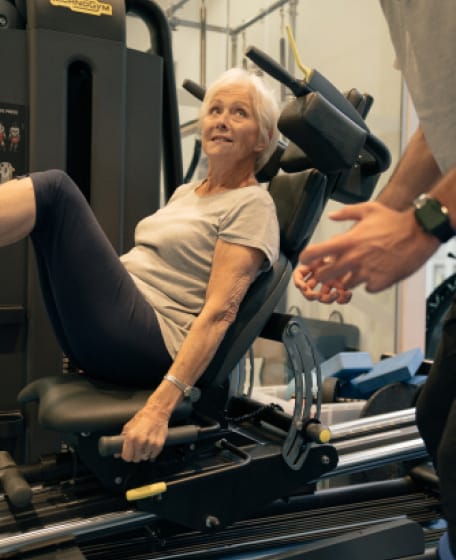Understanding The Gender Health Gap and Women’s Health Inequalities

Claire Small
Chief Clinical Officer & Consultant Physiotherapist
- 9 July, 2025
- Gender health gap
- Heart disease
- endometriosis
- Menopause
- Women's Health
- 6 min read
What is The Gender Health Gap?

The Gender Health Gap refers to the disparities in access to healthcare services and outcomes experienced by men and women.
Despite scientific advances in the medical field, women often face unique challenges that contribute to these inequalities and can lead to longer waiting time for an accurate diagnosis.
Factors such as biological differences, socio-economic status, and gender-specific conditions play significant roles in shaping women’s health experiences.
Understanding and addressing these disparities is crucial for improving women’s overall health and longevity.
Women's Heart Health
Heart disease is a leading cause of death among women, yet it often goes undiagnosed and untreated.
This is largely because women often present with symptoms that differ from those typically seen in men, such as nausea, shortness of breath, and pain in the back or jaw. You might think, if these symptoms are so common in women, why isn’t heart disease immediately considered when these symptoms first appear?
This is because the common nature of these symptoms can often get misdiagnosed initially and investigations for heart disease can often be a last resort when treatments and medications for other potential conditions fail. This delay can lead to women enduring the disease long-term, resulting in potentially irreversible damage.
Family history also plays a crucial role in assessing heart disease risk. Even if a woman doesn’t smoke and maintains normal cholesterol levels, a family history of heart attacks can still heighten her risk. It’s important for women to be aware of these unique symptoms and risk factors and to discuss them with their healthcare providers.
Your FAQs surrounding Heart Health in women answered by our specialists
What is the link between cholesterol and heart disease?
Cholesterol, a fatty substance in the blood, can build up in the arteries, leading to atherosclerosis—a condition where arteries become narrowed and hardened. This increases the risk of heart disease and stroke.
If my body makes its own cholesterol, why does my diet matter?
While the body produces cholesterol naturally, dietary intake of saturated fats and trans fats can elevate cholesterol levels further, increasing the risk of heart disease.
Should I focus on lowering my dietary cholesterol or saturated fat?
Lowering saturated fat intake is more effective than focusing solely on dietary cholesterol. Saturated fats can raise LDL (bad) cholesterol levels, which contributes to heart disease.
Can taking fish oil capsules lower my cholesterol?
Fish oil capsules, rich in omega-3 fatty acids, can help lower triglycerides, a type of fat in the blood, but they may not significantly reduce LDL cholesterol levels.
After you have a heart attack, is it too late to benefit from cholesterol-lowering drugs?
No, cholesterol-lowering drugs, such as statins, can still provide significant benefits after a heart attack by reducing the risk of future cardiac events.

Understanding Endometriosis and Its Impact
Endometriosis is a chronic condition where tissue and cells similar to the lining of the uterus, grow outside the uterine cavity. This causes excruciating pain and can potentially lead to long-term issues like infertility.
Understanding this condition is vital for women’s health as according to Endometriosis UK, it can take up to 8 years for women to receive a diagnosis. Diagnosing endometriosis can be challenging initially, as there is no definitive pain or bleeding threshold to determine whether a woman’s menstrual experience is ‘normal’ or not.
Additionally, each woman’s symptoms and severity will be different. Pain or discomfort is often the first symptom women will present to a healthcare professional to get checked. Other conditions can often be ruled out first such as PCOS (Polycystic Ovarian Syndrome) which presents some similar symptoms to Endometriosis such as heavy, painful and irregular menstrual bleeding. Although sometimes effective, these investigations can cause delay for those women suffering with Endometriosis, seeking an accurate diagnosis.
The exact cause of endometriosis is unknown, but it may involve genetic, hormonal, and immune system factors. Common symptoms include pelvic pain, menstrual cramps, pain during intercourse, and heavy menstrual bleeding.
Endometriosis can impact fertility as excessive uterine-like cells can grow across the ovaries and fallopian tubes, damaging the tissue and making it difficult for eggs to be released and fertilised. Stress can also exacerbate symptoms, and the condition may worsen with age, particularly if left untreated.
Treatment options for Endometriosis are largely determined by the stage at which a woman is diagnosed. In the early stages, such as Stage 1 and 2, characterised by minimal to moderate cell overgrowth and adhesions/lesions, management may involve pain relief medications or oral contraceptives.
However, in more advanced stages, like Stage 3 and 4, where there is extensive tissue overgrowth and severe lesions affecting the womb and other reproductive organs, surgical intervention through a laparoscopy may be necessary.
Unfortunately, due to prolonged diagnostic delays, many women are reaching these advanced stages, where pain relief alone is insufficient. According to Endometriosis UK, some women are facing waits of up to two years for surgery, leading to significant suffering and extended absences from work whilst awaiting treatment.
Conditions Limiting Women's Lifespan
The three significant conditions that limit women’s lifespan are cervical cancer, breast cancer, and heart disease.
Cervical Cancer
Cervical cancer is primarily caused by persistent infection with high-risk types of human papillomavirus (HPV). Regular screening through smear tests and HPV tests can detect precancerous changes early, improving treatment outcomes.
Breast Cancer
Breast cancer is the most common cancer among women worldwide. Early detection through mammograms and self-examinations is crucial for successful treatment. Risk factors include genetics, hormonal factors, and lifestyle choices.
Heart Disease
As discussed, heart disease remains the leading cause of death among women. Gender-specific symptoms and risk factors, such as hormonal changes during menopause, make it essential for women to prioritise heart health through regular check-ups, a balanced diet, and physical activity.
Long-Term Conditions Affecting Women
Women often live with long-term conditions that can significantly impact their quality of life.
Premenstrual Syndrome (PMS)
PMS encompasses a variety of emotional and physical symptoms that occur before menstruation. Symptoms include mood swings, bloating, and fatigue. Lifestyle changes, medication, and stress management can help alleviate PMS.
Endometriosis
As mentioned above, endometriosis causes chronic pain and can lead to infertility. Long-term management involves medical treatment, lifestyle adjustments, and sometimes surgery.
Menopause
Menopause marks the end of a woman’s reproductive years and brings various symptoms, such as hot flushes, night sweats, and mood changes. Hormone replacement therapy (HRT) and lifestyle modifications can help manage menopausal symptoms.
Migraines
Migraines are severe headaches often accompanied by nausea, sensitivity to light, and visual disturbances. Women are more likely than men to experience migraines, particularly during hormonal changes. Treatment includes medication, lifestyle changes, and stress management.

Steps to Reduce the Gender Health Gap
To bridge the gender health gap, it’s crucial for women to take proactive steps in managing their health. Here are some tips:
- Regular Check-ups: Schedule regular visits with your healthcare provider to monitor heart, cervical and breast health.
- Healthy Diet: Focus on a balanced diet rich in fruits, vegetables, whole grains, and lean proteins. Limit intake of saturated fats and trans fats to manage cholesterol levels.
- Exercise: Engage in regular physical activity to improve cardiovascular health and overall well-being. Strength training is essential for everyone, but especially for woman due to it’s ability to reduce the risks of osteoporosis, heart disease, diabetes and even cancer.
- Know Your Family History: Be aware of your family’s medical history and discuss it with your doctor to better understand your risk factors.
- Stay Informed: Educate yourself about the unique symptoms and risks associated with heart disease and endometriosis to advocate for your health effectively.
- Stress Management: Practice stress-reducing techniques such as mindfulness, yoga, or meditation, as stress can exacerbate symptoms and impact overall health.
Steps to Reducing Health Inequalities for Women
Addressing health inequalities for women requires a multifaceted approach.
Firstly, it is essential to increase awareness and educate women about the unique health risks they face. Whether through increased media coverage or more accessible information from healthcare providers, it is vital women are encouraged to attend regular medical check-ups or perform self-examinations to spot any symptoms early on.
Additionally, improving access to healthcare is essential, ensuring that women have affordable, comprehensive services available to them. This will help create an environment where women feel confident seeking care, even if they feel it is nothing to worry about.
Promoting research focused on women’s health issues is imperative for gaining a better understanding and improving the treatment of gender-specific conditions. In addition, advocating for policy changes by encouraging policymakers to prioritise women’s health and tackle systemic barriers can play a crucial role in reducing health inequalities.
By addressing these critical areas, we can work toward closing the gender health gap, ensuring that women receive the care and attention they deserve for a healthier and longer life.
Our Women’s Health service is designed to support women in all stages of life, through all associated conditions. We work hard to stay updated of new research and data in order deliver the best treatment for each one of our patients, and we’ll continue to do so with every new development within the industry, advocating for women to be heard and receive the high level of care everyone deserves.

Advice
Over the last 20+ years our experts have helped more than 100,000 patients, but we don’t stop there. We also like to share our knowledge and insight to help people lead healthier lives, and here you will find our extensive library of advice on a variety of topics to help you do the same.
OUR ADVICE HUBS See all Advice Hubs

